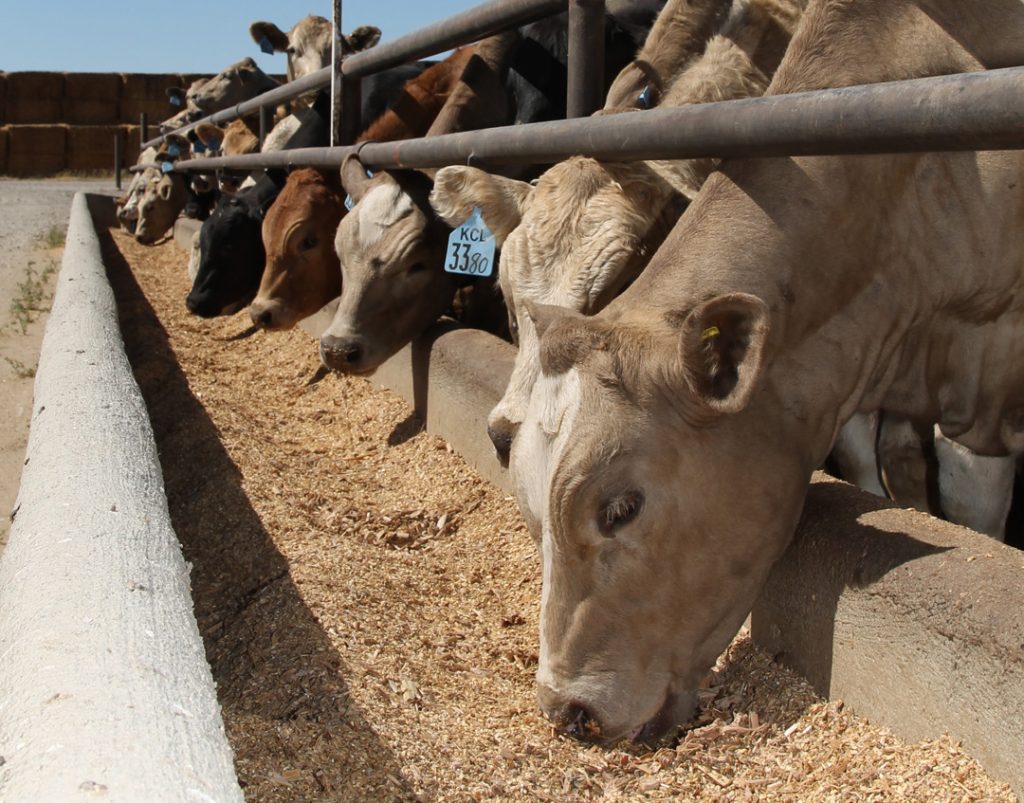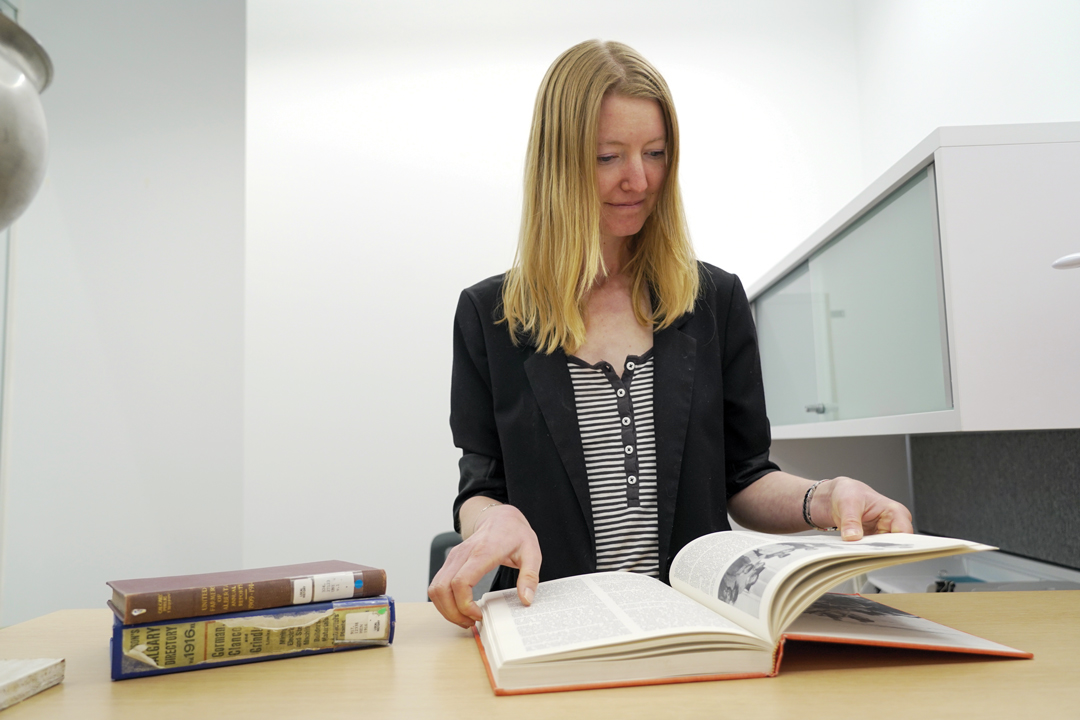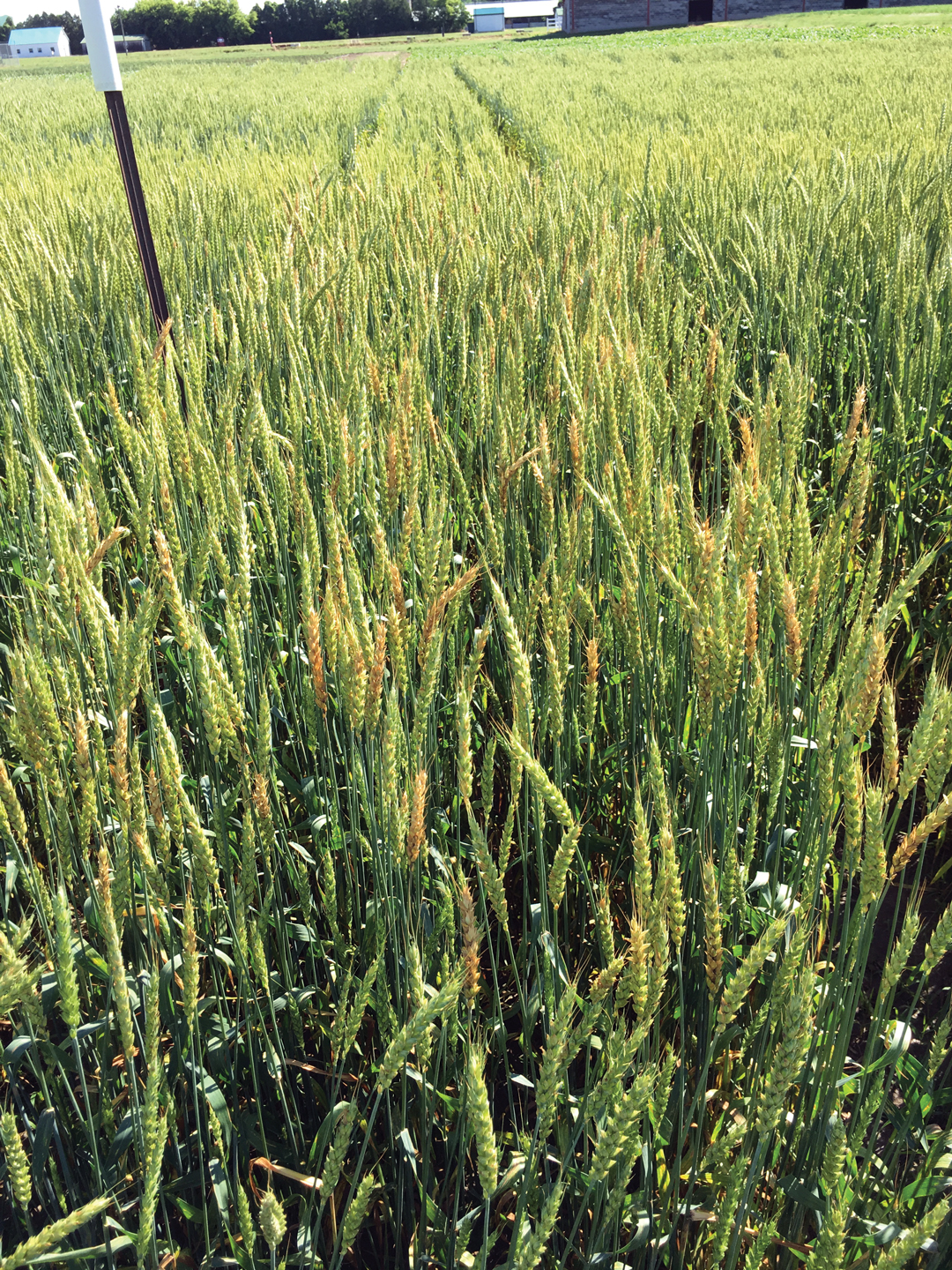DANCE STEPS FOR A SMALLER CARBON FOOTPRINT
BY MELANIE EPP • ABOVE PHOTO BY TWO STONE PHOTOGRAPHY
Part three of a three-part series on carbon issues in farming
The Canadian government has made a substantial commitment to the achievement of its 2030 carbon emission reductions target. In a July submission to the United Nations, the country formally committed to cut greenhouse gas emissions by between 40 and 50 per cent below 2005 levels. This will support the creation of a net-zero emissions economy by 2050. Part of a global push, it is a goal shared by more than 120 countries. In June, it became the nation’s first emissions reduction target to be enshrined in law within the Canadian Net-Zero Emissions Accountability Act.
Canada’s Changing Climate Report identifies agriculture as a sector that faces major threats. In coming years, southern Canada is expected to experience warming at twice the global average. Agriculture has also been pegged as an area in which outsized gains can be made in carbon sequestration and the reduction of emissions.
In April, the federal government launched the new Agricultural Climate Solutions (ACS) program, which aims to help Canadian agriculture develop and adopt strategies that sequester carbon and mitigate greenhouse gas emissions. The funding will be allocated to projects that accelerate the co-development, testing, adoption, dissemination and monitoring of carbon- and greenhouse gas-friendly technologies and practices, including beneficial management practices. This will allow the sector to take advantage of new opportunities related to the emergent green economy.
ACS is a multi-stream program that falls under the $4 billion Natural Climate Solutions Fund. Over a 10-year period, ACS will allocate $385 million of this targeted cash. To meet its goals, ACS will establish a Canada-wide network of Living Labs. Working farms composed of individual networks of agricultural sites, a number of these have previously been set up. For each, a lead partner from the sector will bring together farmers, scientists and other key stakeholders who will co-develop practices to reduce Canada’s environmental footprint and enhance climate resiliency.
For approved projects in provinces without existing Living Labs, the program will kick off in 2022. In Quebec, Ontario, Manitoba and Prince Edward Island, which all have Living Labs in place, the program will start in 2023. An additional two-part funding cycle will begin in 2027 and 2028.
Proposed ACS projects within the priority areas of carbon sequestration and greenhouse gas mitigation will be considered, said Anna Pacheco, senior national co-ordinator, Living Laboratories Division, Agriculture and Agri-Food Canada (AAFC). Possible carbon sequestration projects may study cover crops, intercropping and the inclusion of pulses in rotation. Possible greenhouse gas mitigation projects include nutrient management and feed strategies, the latter of which is most relevant to the livestock sector. In addition, applicants have been encouraged to indicate whether their projects may produce additional environmental benefits. These could include improved soil health, positive effects on water quality and conservation, increased biodiversity and benefits to wildlife and natural habitat.
“What is different about it is that we are bringing the farmers in from the onset of the program, of the projects, and we are asking for their feedback in terms of what practices they believe can be innovated or refined,” said Pacheco of the Living Labs approach. “As scientific data are collected from the farmers’ fields and are evaluated, they continue to be involved by providing feedback throughout the duration of the project.” This emphasis on farmer participation is intended to improve the likelihood new management practices can and will be put to use on farms.
The ACS project is not the sole initiative of its kind. A second Natural Climate Solutions funding stream relevant to agriculture is the On-Farm Climate Action Fund. A $200 million, three-year initiative that begins this year, it aims
to support farmers in the adoption of beneficial management practices that store carbon and reduce greenhouse gas emissions. This will be implemented in the areas of nitrogen management, cover cropping and rotational grazing practices.
Across the country, agricultural stakeholder groups expressed frustration they were not consulted when these policy and funding opportunities were being developed. Despite this criticism, the Alberta Wheat Commission (AWC), Alberta Barley and Alberta Beef Producers are among the program applicants.

WESTERN CANADIAN FARMERS SURVEYED
Following the launch of ACS, the office of Minister of Agriculture and Agri-Food Marie-Claude Bibeau approached industry groups such as the Grain Growers of Canada (GGC) for feedback. Would farmers take advantage of the funding opportunity, and if not, why not? GGC sent out a member survey.
While the questionnaire drew responses from just 40 people, these came primarily from farm group directors in the Prairie provinces that well understand the needs of farmers in their regions, said Erin Gowriluk, GGC executive director. Gowriluk noted significant hesitation among respondents in the area of cover cropping. Though a quarter of them had tried cover crops, few had success. She speculated two possible reasons could be lack of adequate moisture and a narrow post-harvest planting window. Some farmers felt they should be incentivized to adopt these practices.
In contrast to cover cropping, most farmers said they are well ahead in the adoption of beneficial nutrient management practices. Those who haven’t adopted the 4R Nutrient Stewardship program cited equipment upgrade costs. Branden Leslie, GGC manager of policy and government relations, said this could be due to a knowledge gap about the 4R program. Fertilizer Canada and other industry partners are hard at work to remedy this, he added.
Given the variability in soil type, acreage and existing equipment on individual farms, it is difficult to determine how much the average farmer would need to invest to adopt 4R management strategies, said Leslie.
“If upon soil testing, a grower realizes there is a mixture of nutrients required on various pieces of land they own, that grower may not have an air seeder set up to deliver the required nutrients, and may need to make alterations or upgrades to their equipment in order to do so,” he said. “There are also, of course, some farmers who are using quite old equipment that really won’t meet the needs of certain types of product application.”
He did point out, though, that farmers have been offered significant support for cost-shared agronomic advice, which could help them to better determine the needed investment, if any, they would require.
Gowriluk is annoyed farmers were excluded from the conversation when these policies and funding opportunities were developed. The federal government did reach out to the industry group Farmers for Climate Solutions. However, Gowriluk pointed out this organization primarily represents organic farmers as opposed to conventional.
“If it isn’t something that’s feasibly done in many parts of the country, then you’ve just developed a program and thrown a whole bunch of money into an initiative no one’s going to sign up for,” said Gowriluk. “It’s very frustrating from the perspective of a national association when government develops policy and they don’t consult with the farmers who are going to be the ones who have to actually implement these practice changes.
“Unfortunately, what we’ve seen increasingly from this government is that a lot of the agricultural policy around climate and sustainability is coming out of Environment and Climate Change Canada (ECCC), and the ECCC, for the most part, has not engaged [conventional] agriculture stakeholders,” she added.

BEEF AND CROP SECTORS COLLABORATE
The federal government received a substantial number of applications for the first round of the initiative. Sheri Strydhorst, AWC and Alberta Barley agronomy research scientist, is part of a project group led by Karin Schmid, Alberta Beef Producers’ research and production manager, who spearheaded a grant application for just shy of $100,000. It is intended to support the development of a network that, if successful, will develop a comprehensive project proposal. The phase one funding will help the group set up a governance structure, build collaborative networks and put together a team that will oversee the development of a phase two application. It will be the team’s job to ensure the proposal is scientifically sound and feasible from a farmer standpoint.
One of the goals of the ACS program is to develop projects through collaboration with industry stakeholders. “The collaboration between the crop sector and the beef and forage sectors is a bit unique,” said Schmid. “There is a lot of overlap between the sectors in terms of the products that are used in the feeding sector and the nutrients from manure that are then used in the cropping sector. I think there are a lot of ways we can work together to advance the goals of the ACS program,” she added.
If the Alberta funding application proves successful, said Strydhorst, the project group will consider the location of a Living Labs facility in an area of the province where the potential for carbon sequestration is highest. This includes areas where summerfallow remains common and where adoption of no-till soil management is lower. Similarly, areas with lower levels of soil organic carbon, medium to fine soil textures or where cropland is degraded may be targeted. “This is where the biggest gains can be made initially,”said Strydhorst.
“Scientists have developed practices to increase carbon sequestration, now the next step in that process is to make these scientific solutions work on-farm. Farmer engagement will be critical for the success of this project. Living Labs will provide the opportunity to co-develop workable practices to sequester carbon in real-life farming operations.
“This is an opportunity for farmers to have a voice and find tools that are practical to implement on their farms.” The model can tackle the social and economic barriers that hinder sequestration. “If it’s not practical for a farmer to grow cover crops, perhaps they could employ shelter belts or more diverse rotations.”
Data collection will be the key from proposal to practice. “As we plan for the full proposal, we will develop experimental protocols to measure carbon sequestration in the agricultural production systems,” said Strydhorst. “We need to use the same methodology in all areas so that the data, when it’s compiled, can be meaningful. It needs to be able to survive peer review so that it’s reputable and solid data.”
Once the methodology is in place, they will measure carbon sequestration potential under various scenarios. These may include the use of diverse rotations, cover crops or nutrient management strategies. Then the working group, which has not yet been established, will identify barriers to adoption, whether economical or logistical and provide an economic analysis of each strategy. The information will be used to inform policymakers.
“I think everyone is really apprehensive about stepping into this space because it is a new space,” said Strydhorst, referring to the carbon market. “But we also see, from the policy perspective, just how important this work is.”
Funding applications were under review at the time of writing, but Strydhorst and Schmid believe theirs is strong. Preparations for the second round of funding won’t begin until the first is approved.







Comments